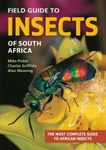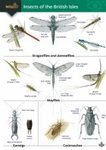![Encyclopedia of South American Aquatic Insects: Odonata - Zygoptera Encyclopedia of South American Aquatic Insects: Odonata - Zygoptera]()
Click to have a closer look
About this book
Contents
Customer reviews
Biography
Related titles
About this book
&i;Zygoptera&o; completes the two volume work on the order Odonata in the Encyclopedia of South American Aquatic Insects.
The Zygoptera volume encompasses the relatively small dragonflies, often called damselflies. A brief review of the biology of the group includes illustrations of the main morphological features as well as explanations of alternative systems for naming the wing veins and other characteristics commonly used to distinguish the species. This will show the user of the identification keys in the volume the alternative names for the anatomical structures most frequently encountered in the literature. The sections on the morphology of the adults and larvae are followed by brief discussions of ecological and zoogeographical factors influencing the distribution of the dragonflies and instructions on the various methods used to observe, collect, preserve, and examine specimens.
Most of the book is devoted to keys that facilitate identification of both adults and those larvae which have already been described. For the first time, all of the available information needed to identify the adults of all recognized species inhabiting South America has been compiled from a large number of individual taxonomic works written in six languages during the past two centuries. Separate keys are provided to identify all larvae that have been positively identified and described prior to early 2007. In addition to the descriptions of the morphological features used to distinguish the species, the keys provide the known ranges listed by country and by states within Brazil, as well as the synonyms most likely to be encountered in the literature. The publications cited with the species names and in the keys can be found compiled in an extensive bibliography, informing the user where more extensive species descriptions and additional information about each species can be located. Although taxonomic revisions are deliberately avoided, suggestions for additional research and the opinions of experts concerning immanent taxonomic changes are provided where appropriate.
To provide the user of the keys with maximum assistance in making reliable identifications, the book is richly illustrated with pen and ink drawings of thousands of individual morphological structures arranged in 767 figures. It is certain that many significant changes will occur in the systematics of South American damselflies in the future, and this book is meant to provide the impetus needed to accelerate the work of nomenclature and revision. Meanwhile, it will provide a comprehensive overview of the South American Zygoptera that has hitherto remained almost unobtainable to most South American scientists because of the great difficulties in obtaining the numerous publications from numerous countries in which the original descriptions of species and taxonomic revisions have appeared. It also provides student entomologists with a basic text for learning what they need to know to work effectively with the Zygoptera of South America and adjacent regions.
Contents
IntroductionAn appeal for quality in taxonomic workScope of the workAcknowledgementsLiterature; Section 3: OdonataKey to the suborders: Adults, Larvae; Section 3, Part 1: Zygoptera3.1.1 Morphology3.1.1.1 Adult morphology3.1.1.2 Larval morphology3.1.2 Ecology3.1.3 Preservation and examination3.1.4 Zoogeography3.1.5 Taxonomic problems3.1.6 Suggestions for improvementA note on the figures 3.1.7 Key to the families of Zygoptera in South America: Adults, LarvaePolythoridaeCalopterygidaeHeliocharitidaePerilestidaeLestidaePseudostigmatidaeMegap
Customer Reviews
Biography
The author, Dr. Charles W. Heckman, has performed ecological research in Laos, Thailand, Germany, Brazil, and the United States. His publications include books on rice field ecology in Thailand and the Pantanal wetland in western Brazil, as well as many monographs and shorter publications on various aspects of biology and environmental sciences. He undertook the preparation of the Encyclopedia of South American Aquatic Insects to produce a reference work with which researchers in South America can identify the species they encounter without having to first complete exhaustive searches of the literature, including papers published on several continents in different languages. The lack of such a tool has long impeded progress in faunal surveys, ecology, and other fields of science. Dr. Heckman's extensive experience identifying aquatic insect species using less than optimal literature has allowed him to develop an ability for recognizing the morphological features most useful for distinguishing one species from another, and this ability comes to the aid of the users of his keys to the South American aquatic insect species.




































